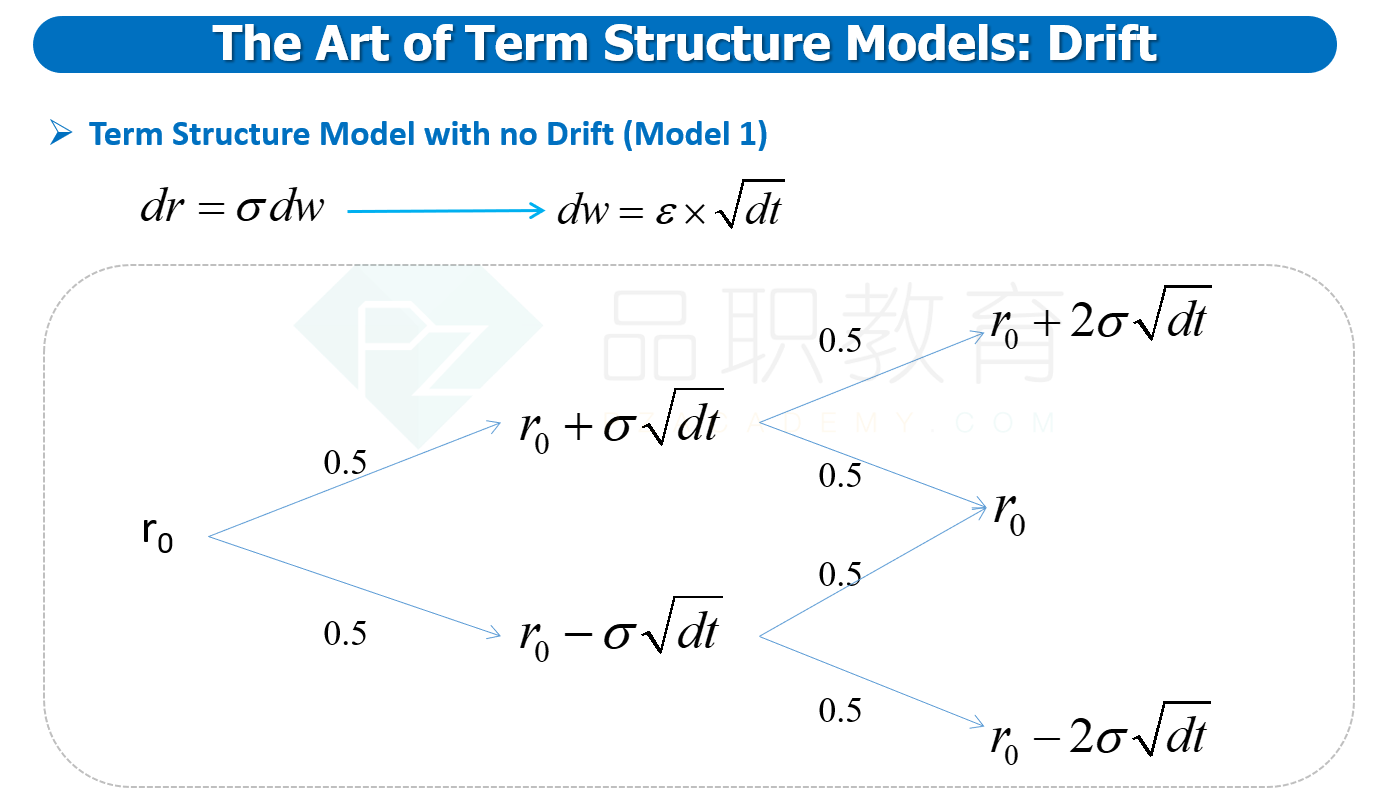NO.PZ2018122701000067
问题如下:
Model 1 assumes zero drift and is also called a normal model. Model 2 add a term for drift. Each of the following is true about these two models except for:
选项:
A.
A weakness of Model 1 is that the short-term rate can become negative.
B.
Model 1 implies a term structure that is perfectly flat at the current rate for all maturities, including the long-term rates.
C.
Model 2 is more capable of producing an upward-sloping term structure, which is often observed.
D.
Model 2 is an equilibrium model, rather than an arbitrage-free model, because no attempt is made to match the term structure closely.
解释:
B is correct.
考点Term Structure Models
解析Under Model 1, it is true that the middle node recombines to the same current node. But these are future short-term rates; they are not the term structure: the term structure is spot rates at all maturities. Models that take the initial term structure implied by market prices are called arbitrage-free models. A different approach, however, is to start with assumptions about the interest rate process and about the risk premium demanded by the market for bearing interest rate risk and then derive the risk-neutral process. Models of this sort do not necessarily match the initial term structure and are called equilibrium models.
解析不是很懂,麻烦每个选项解释




